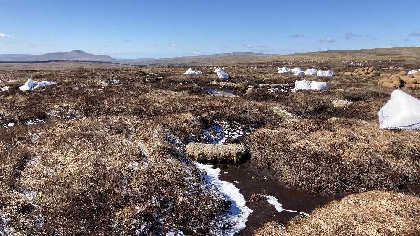
An ‘enormous’ amount of restoration work is taking place at the most damaged blanket bog peatland in the National Park.
If you have travelled from Hawes down to Outershaw and wondered what the big white sacks on Fleet Moss are, we can reveal all here.
Thousands of tonnes of coir, brash and stone have been brought this spring to Fleet Moss, Oughtershaw and Bleaberry – an area of moorland covering 166 hectares, located six kilometres south of the town of Hawes. The coir logs and stone, brought to site by helicopter, are being used to block erosion channels.
Brash – a mixture of cut heather, cotton grass and other peatland plants – is being spread over bare areas of peat to re-seed it and protect it from eroding further.
Much precious peat has been washed off the moor in recent decades. On parts of Fleet Moss, channels four metres deep have appeared. This means four thousand years of history have in effect been swept away, as peat is formed by sphagnum mosses at a rate of one metre depth every thousand years.
Work on the ground has now been paused for the ground nesting bird season but it will begin again in July, before the three-year project comes to an end in December.
The LIFE Programme – through Pennine PeatLIFE, Yorkshire Water and the Environment Agency - combined with Defra funds have provided a total of £1.3 million for the work, which is being carried out by Yorkshire Peat Partnership under the management of Yorkshire Wildlife Trust (YWT). Farmers have been supported through agri-environment schemes to take off livestock from Fleet Moss and Oughtershaw, and graze only limited numbers on Bleaberry.
Jenny Sharman, Peatland Restoration Officer at YWT, said: “Every time I go out to work on the site, I feel immensely encouraged by what I see. The peat bunds are holding water and in places sphagnum is beginning to return to the pools. Sediment is filling behind the coir extremely rapidly and the stone dams are also collecting sediment and slowing the flow. Our latest hydrological interventions are timber dams and they are holding back masses of water, too.”
Member Champion for the Natural Environment at the Yorkshire Dales National Park Authority, Ian McPherson, said: “Fleet Moss is currently a stirring scene of restoration. An enormous amount of work is going on to restore this bog. The National Park Authority has declared a climate emergency and the evidence shows that peatland restoration is the most cost-effective action we can take to tackle the emergency.
“Getting this bog back into good condition will lead to huge amounts of carbon dioxide being pulled from the atmosphere and stored in the peat. Although it will take decades for the benefits of this work to be felt fully, the difference being made can be seen already. Where a couple of years ago there was bare peat, sphagnum moss – our great ally in the battle against global warming – is growing again.”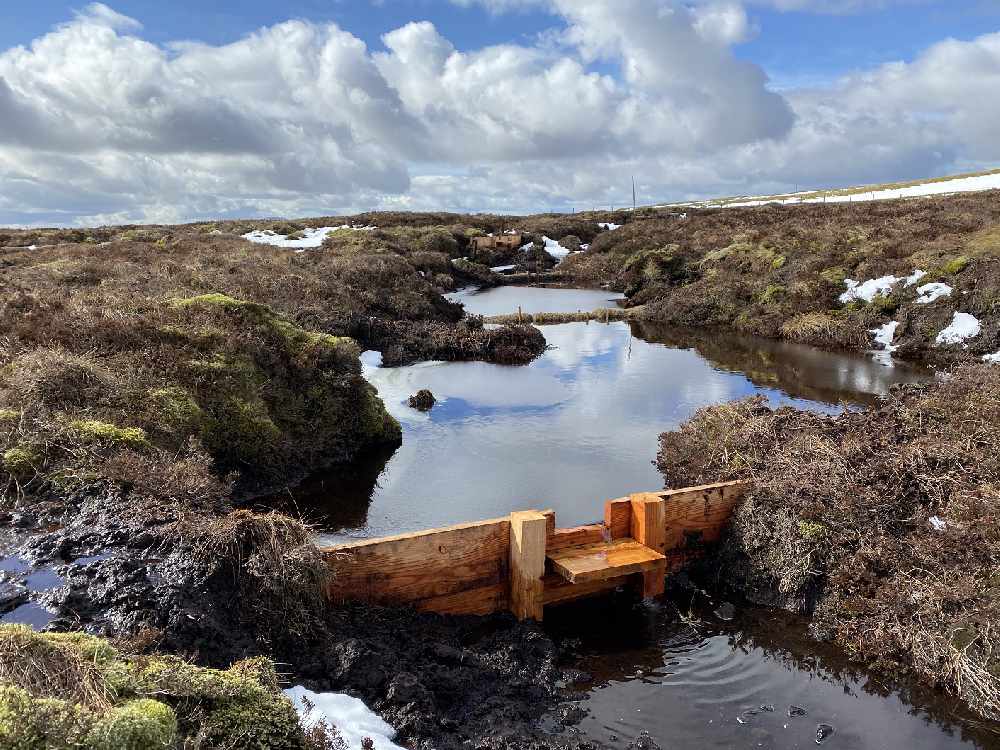
‘SCENE OF RESTORATION’ IN DETAIL:
- About 102 hectares of Fleet Moss is being restored. The Oughtershaw site to the west of Fleet Moss, next to the roadside, is nearly 16ha. To the east of Fleet Moss there is Bleaberry Moor, which is 48ha. In total, 166 ha of peatland is being restored over threes years.
- So far, a total of 10,657 one metre long coir logs and 2,100 dumpy bags of brash have been taken to Fleet Moss; 1,949 coir logs to Oughtershaw; and 1,400 coir logs (500 of which are two metres long) and 1,000 bags of brash to Bleaberry.
- The coir comes from Sri Lanka and is manufactured into logs in the UK.
- The brash comes from a neighbouring moor and the stone from a local quarry.
- There are 51,160 hectares of blanket bog in the Yorkshire Dales National Park. Almost all of this peatland was degraded when Yorkshire Peat Partnership began its work in 2009. In the past 10 years, YPP has restored 20,240 ha, leaving 30,920 ha still to restore.
Further restoration works are being planned for other parts of Fleet Moss. In January, YWT announced that the Garfield Weston Foundation was to donate funds to make the next phase of work possible.
One of the 49 objectives of the Yorkshire Dales National Park Management Plan 2019-2024 is ‘to restore, by 2030, all degraded blanket bog/deep peat habitat to ecologically and hydrologically functioning bog that is actively sequestering and storing carbon, and is being managed sustainably’ (objective D3).


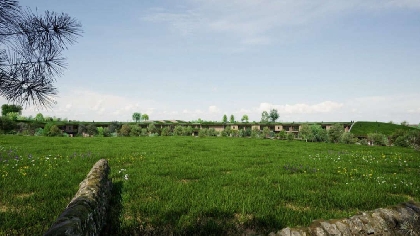 Burning issue resolved at revised Dales holiday complex
Burning issue resolved at revised Dales holiday complex
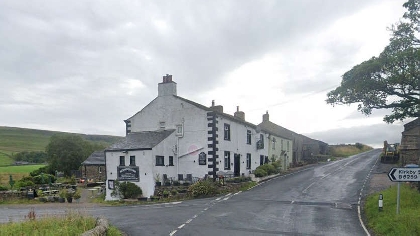 Call to force historic Garsdale inn owner to restore pub
Call to force historic Garsdale inn owner to restore pub
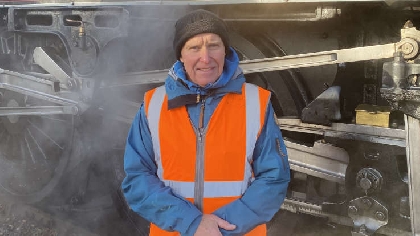 Mountaineer joins Wensleydale Railway as patron
Mountaineer joins Wensleydale Railway as patron
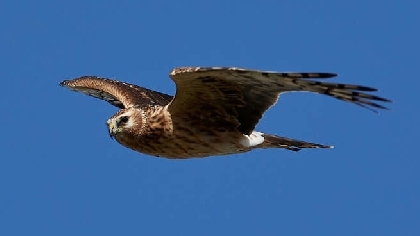 Highest number of nesting attempts by hen harriers achieved last year
Highest number of nesting attempts by hen harriers achieved last year
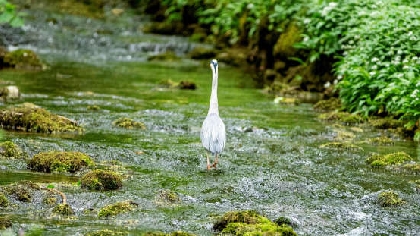 Future of National Park: nature recovery is the people’s priority
Future of National Park: nature recovery is the people’s priority
 Scotch Corner outlet opening dependent on unscheduled roadworks
Scotch Corner outlet opening dependent on unscheduled roadworks
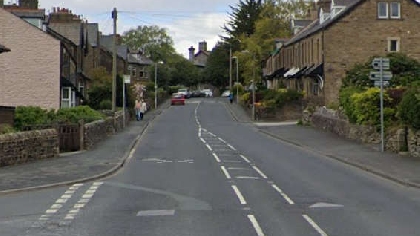 HS2 fund divert to repair SOME of Craven's roads
HS2 fund divert to repair SOME of Craven's roads
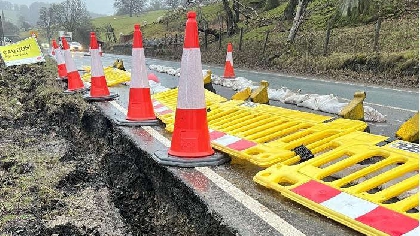 A59 closure: Council says wet weather not tree felling caused surface to crack
A59 closure: Council says wet weather not tree felling caused surface to crack
Comments
Add a comment